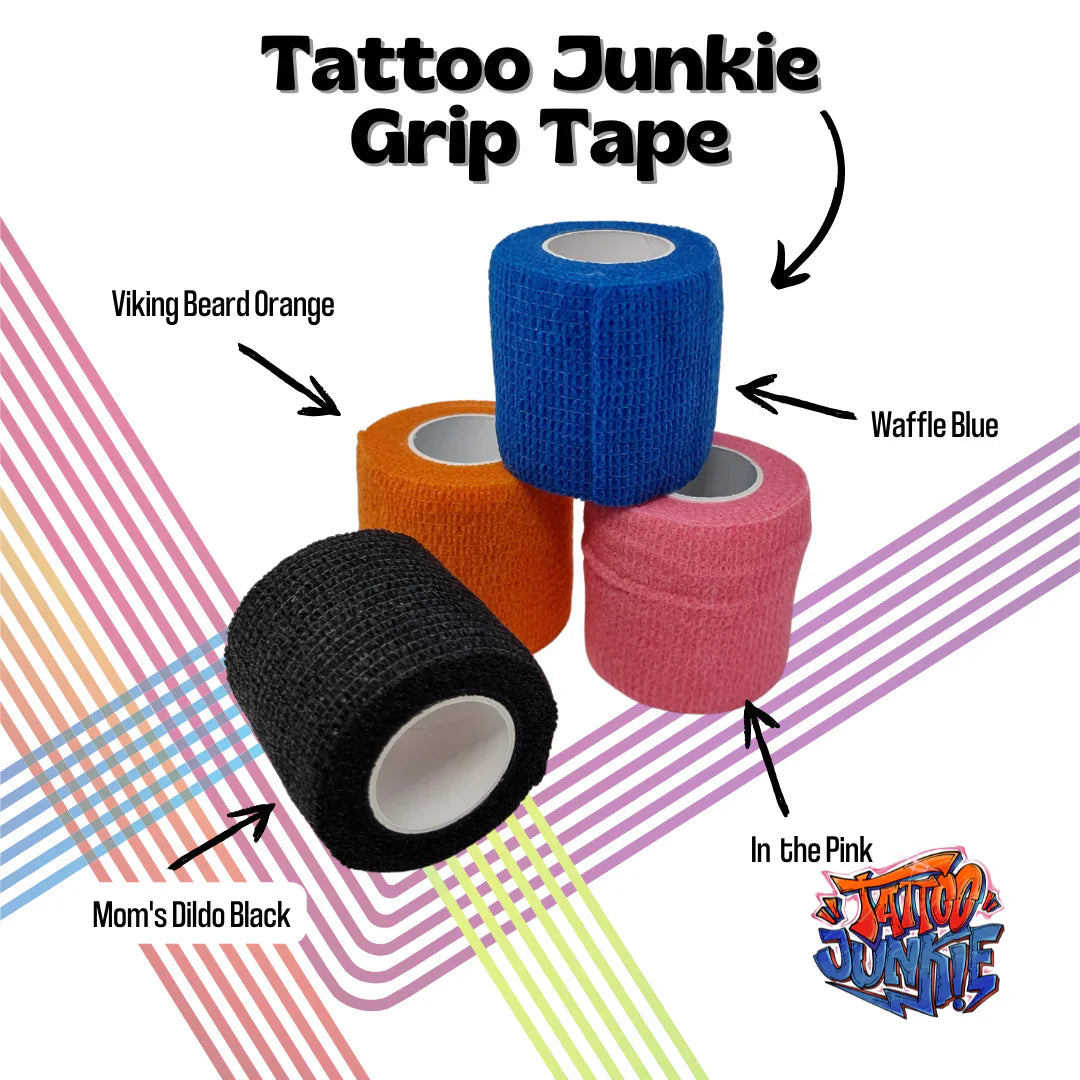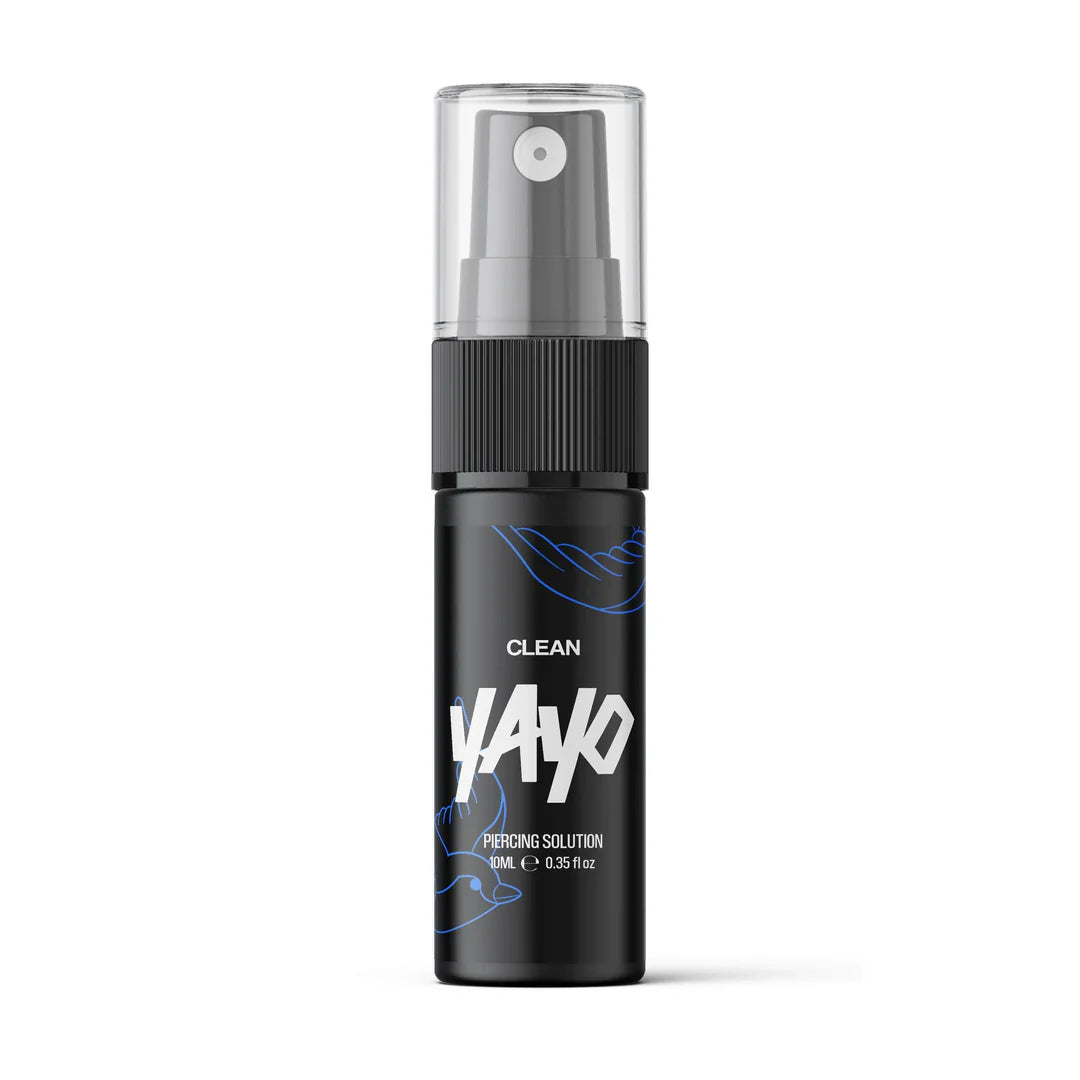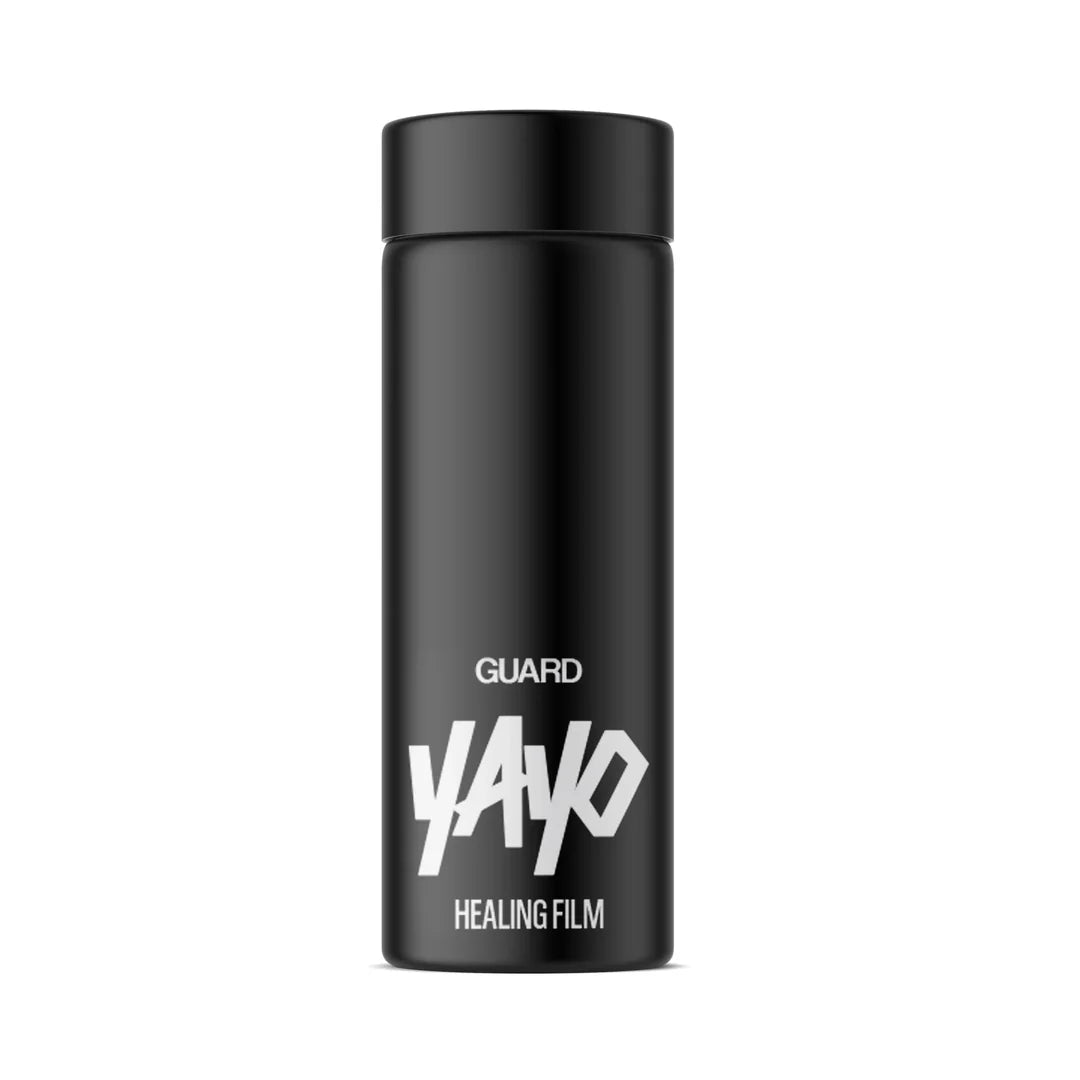Tattoo Grip Tape: Get a Hold on Easier Tattooing Sessions

Want to know why tattoo artists use grip tape, what it’s for, and the different types available? You’ve come to the right place. Tattoo grip tape is a crucial element of any tattoo artist’s toolkit, helping them get the best grip for their tattoo creations.
What is tattoo grip tape?
Tattoo grip tape is used to wrap around tattoo machine grips to provide extra cushioning and grip for tattoo artists while they are tattooing. The tape could also act as an alternative to regular or medical tape to serve a range of functions for tattoo application and aftercare. Generally speaking, grip tapes are self-adhesive and can be made from paper, cloth or plastic.
What is tattoo grip tape used for?
The use of grip tapes makes it more comfortable for tattoo artists and allows them to secure the machine for greater accuracy. Grip tape can also help prevent long-term degenerative problems for tattoo artists by minimising the damaging vibrations from the machines and tubes.
By acting as a protective barrier, the grip tape could also allow the tattoo artist to have a longer career by saving them from numbness in their fingers, carpal tunnel and calluses from repetitive use.
What makes a good tattoo grip tape?
The best tattoo grip tapes tend to be made of breathable materials including non-woven fabric or highly elastic materials. These are the most comfortable and offer the least irritation to your skin.
Tapes should also be strong so that no clips or pins are required. It should have strong self-adhesive properties and should be non-slip so that it requires little to no adjustment.
Crucially, it should provide a soft cushion to reduce the vibrations of the machine and offer the tattoo artist a comfortable grip.
Other desirable factors for tattoo grip tape include not leaving sticky residue on the machine, easily tearable without scissors to make it easier for artists, and flexible usage.
What are tattoo grip tapes made of?
Tattoo grip tapes tend to be made of a self-adhesive material which is made up of elastic fibres and a non-woven cotton material. This allows it to stick to itself but not to the gloves of the tattoo artist or to the skin of the person getting a tattoo.
There are three different materials for tattoo grip tape:
- Paper
- Cloth
- Plastic
The material used will typically depend on the preference of the tattoo artist. There are advantages and disadvantages for each.
Paper
Paper tattoo grips are adhesive paper tapes. This option is durable, strong and flexible, with the potential to stick to almost every surface without causing damage when peeled off. Although only suitable for one-time usage, paper grips tend to be compostable and recyclable making them a sustainable option. Paper grips offer a very versatile option and can be easily torn by hand without the need for scissors - this allows tattoo artists to get on with their work with little interruption.
Cloth
Cloth grips can be a good option for tattoo artists as it offers maximum comfort. The grip acts as a barrier between the tattoo artist’s hand and the machine so the fatter grips offered by cloth material can help prevent discomfort and hand fatigue during long stints of tattooing. Cloth is a reusable option but would need to be regularly washed.
Plastic
Plastic is commonly used by tattoo artists in various parts of the tattooing process to keep a sterile working environment. As well as providing a grip for tattoo artists, plastic grip tape can act as a barrier to stop bodily fluids or ink coming into contact with the machine. This makes it easier for the tattooist to keep equipment clean between clients ensuring the safety and hygiene both for the tattoo artist and the client.
Key takeaways
As a tattoo artist, tattoo grip tape should be an essential tool in your kit, both to increase accuracy and comfort in the short-term, and protect your hand from long-term damage.






